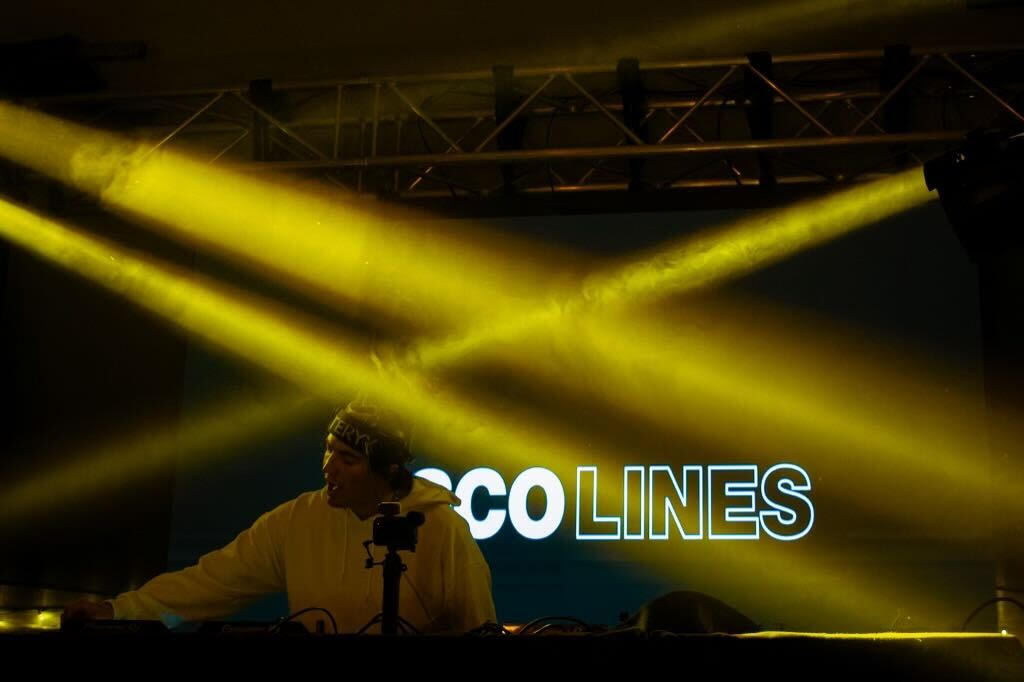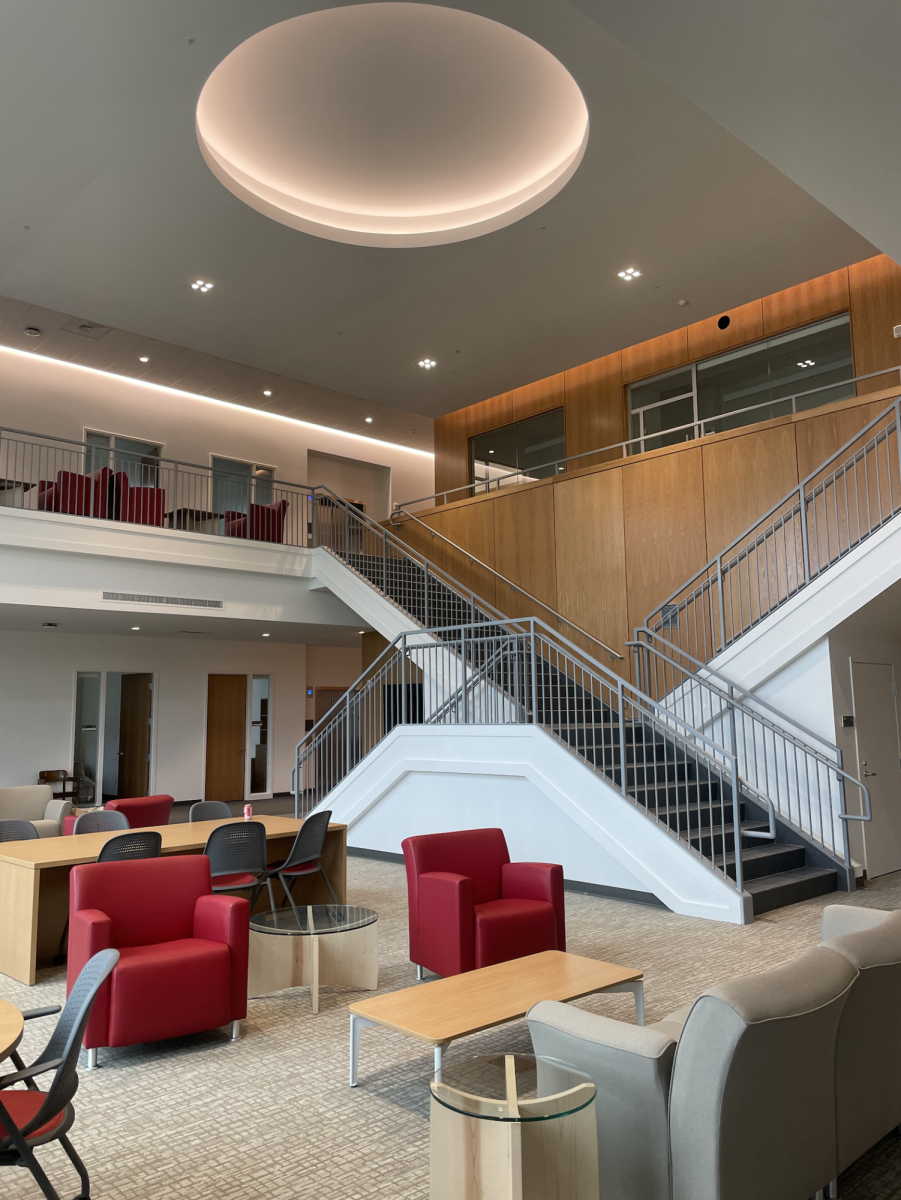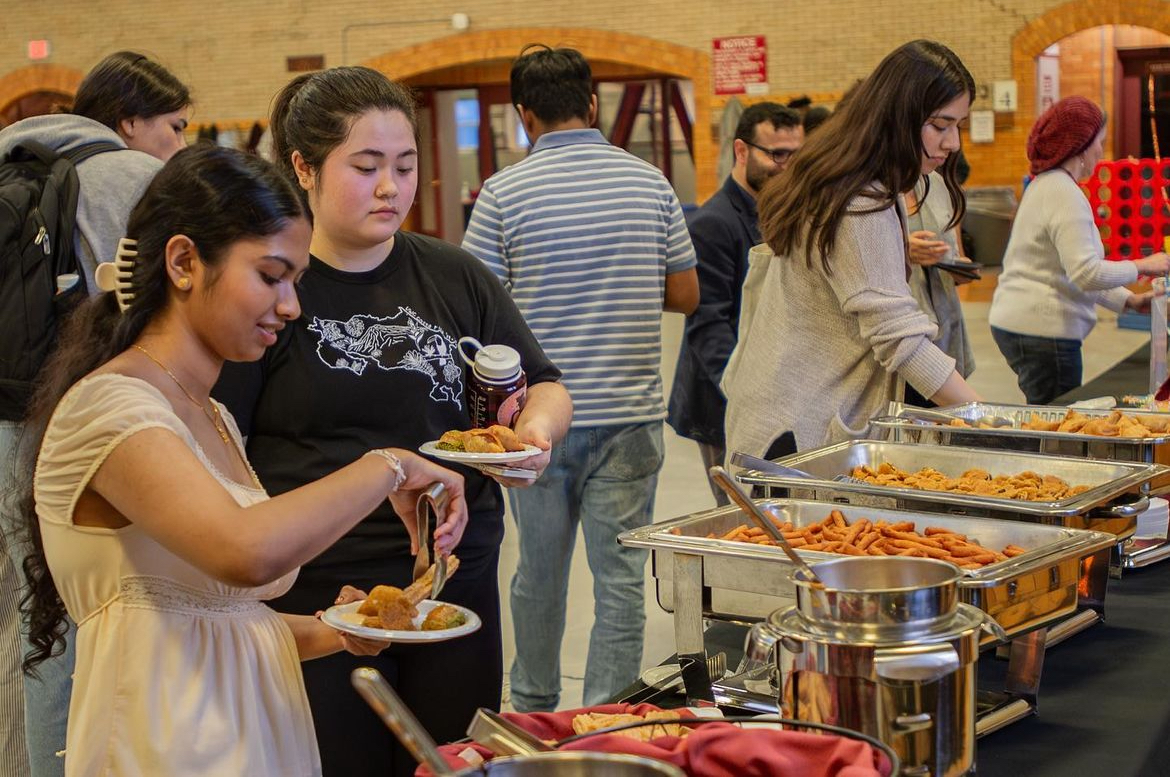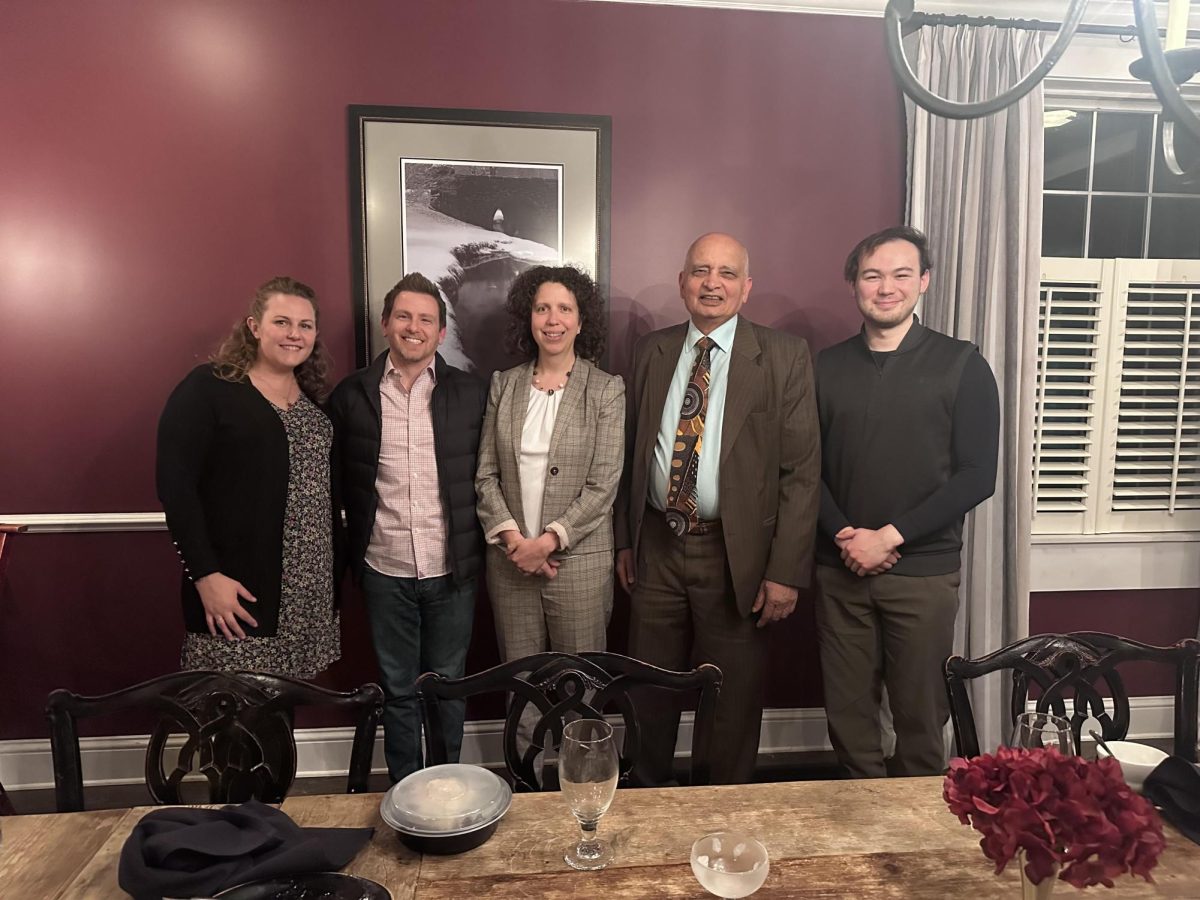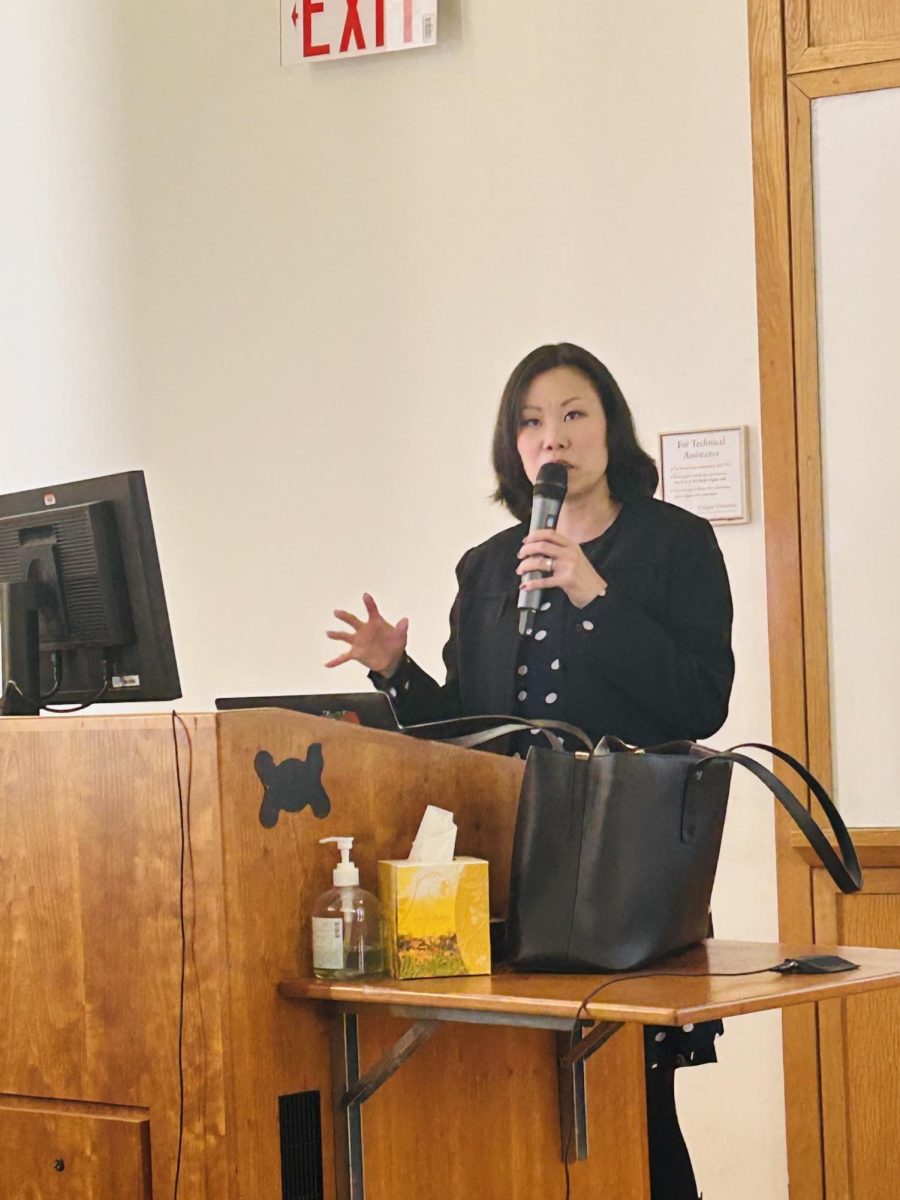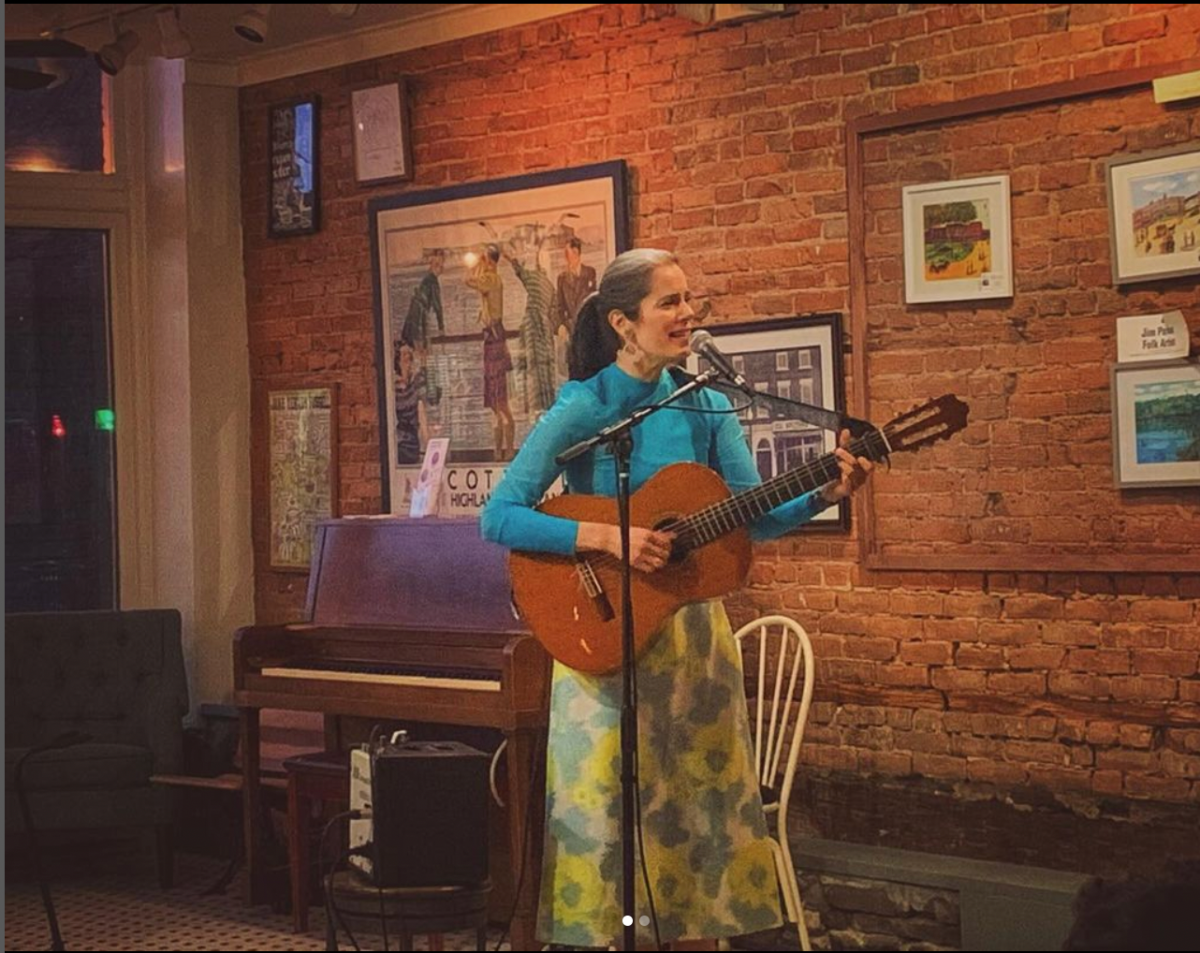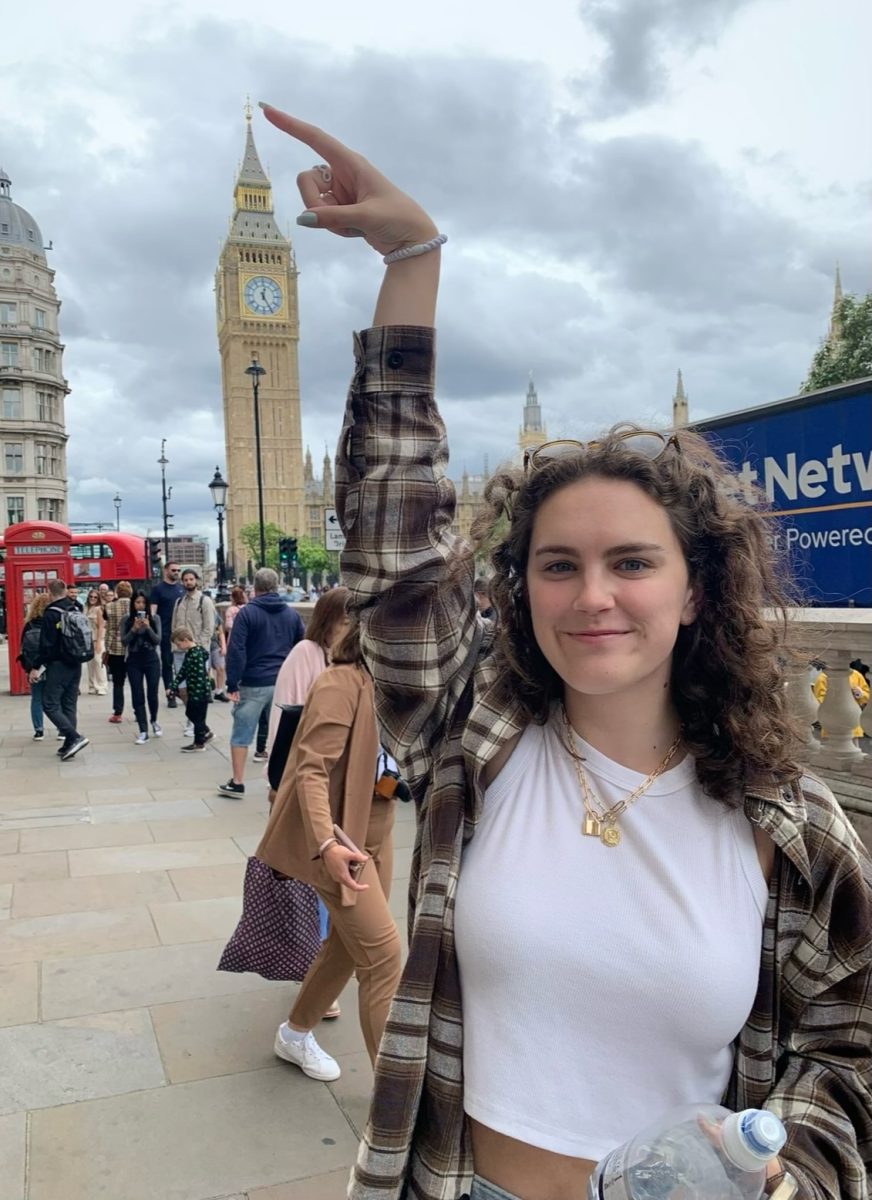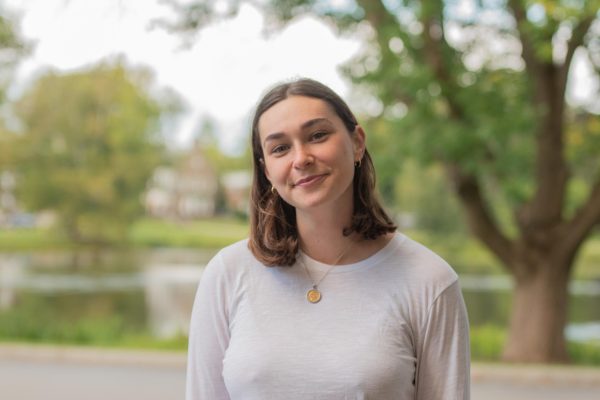Colgate University’s Jewish studies program invited Glenn Dynner to give a lecture titled “Hasidism in Poland on the Eve of the Holocaust” on Wednesday, Feb. 28. Dynner is a professor of Judaic studies at Fairfield University and a co-editor of “Shofar: An Interdisciplinary Journal of Jewish Studies.” The presentation was a part of the Frank and Lois Lautenberg Jewish Lecture Fund.
Hasidism is an Orthodox spiritual revival movement within Judaism that arose in 18th-century Poland. Professor Dynner explained throughout his lecture how a valid intellectual tradition emerged from the decadent, mystical origins of Hasidism, predominantly due to the spread of traditional Jewish educational institutions focused on Talmudic learning called yeshivas.
“Hasidism transitions from this very folksy movement of singing and dancing — at least, that was the image — to a pretty serious movement,” Dynner said. “It’s like that to this day; it’s a very scholarly movement where they study.”
Professor Dynner used the unpublished 1918-1924 diary of Jula Wald, a Hasidic tavern-keeper’s daughter, to explore the grand themes of interwar Polish Hasidic life, including the decline of traditions, Hasidic acculturation into Polish society and — notably — anti-Jewish violence. Wald’s diary captured the increasing frequency of violent riots called pogroms, the systematic mass killings of Jews and the destruction of Jewish homes and businesses that they entailed. Professor Dynner noted that an extraordinary phenomenon occurred in the Hasidic community as a reaction to this violent antisemitism.
“There are hundreds of Hasidic yeshivas that appear almost out of nowhere, and schools for girls and women,” Dynner said. “Now, what’s going on here? There’s a kind of pedagogical revolution, where to save themselves against all of these temptations of modernity, they’re creating yeshivas to try to reconstitute their communities.”
Polonization initiatives that used education and primary schooling to force Hasidic Jews to assimilate into wider Polish society also had the effect of furthering the spread of yeshivas and strengthening the resolve of the Polish Hasidic community.
“Those anxieties fuel this whole yeshiva construction project — that yeshivas and schools for women become an answer to this threat to their culture,” Dynner said.
Professor Dynner used a sociological theory to explain the seeming paradox of an explosion of yeshivas in response to anti-Jewish education laws.
“Marginalized groups begin to fortify their own cultures and create what [is called] cultures of resistance: Marginalized communities often create autonomous subcultures with a highly ritualized and stylized form, which solve, in an imaginary way, problems which at the concrete material level remain unresolved,” Dynner said. “It’s kind of like a mental solution to the problem of exclusion.”
Dynner also explained how many modern movements, especially those coming from marginalized or oppressed groups, do not always behave as expected — that is, they do not conform to typical patterns of Westernization and secularization. The interwar Polish Hasidic movement was a kind of traditionalist religious revival, which often occurs when there is coercive assimilation amid ongoing discrimination.
When Nazi Germany invaded Poland in 1939, the Polish Hasidim, for the first time, began to give up wearing their traditional clothing and quit religious observance en masse. Yet, underground yeshivas still emerged in Jewish ghettos in occupied cities, which Dynner found to be a uniquely powerful form of faith.
“What they’re doing, essentially, is refuting a Western culture that has proven itself to be murderous, and that becomes a really powerful thing. When they’re doing this in defiance of all law, and with all of this persecution, and they wouldn’t leave Hasidim down to the very end, I think there’s something kind of inspirational about this,” Dynner said.
Professor of History Robert Nemes had students from his class, HIST 346: Germany, Russia, Eastern Europe, attend the lecture as it connected to his course content.
“We’ve been spending a lot of time looking at Poland and looking at the coexistence of a lot of different people there,” Nemes said. “This lecture — which talked a lot about the place of Jews within larger Poland — was perfect for that, so it really fit in with where my class is going.”
Despite the difficult themes and complex theories discussed, Nemes acknowledged the openness and informal tone of the lecture.
“I thought it was pitched really well. He made some big arguments and some important points, but I think he was always accessible to everyone in the room, even people who don’t know that much about Judaism or Jewish history or East European history, so I thought it was very successful,” Nemes said.
Senior Kate Alonso, a student in Professor Nemes’ class, echoed his sentiments about the success of the presentation.
“I thought the discussion was really interesting,” Alonso said. “I feel like the lecturer displayed his research in a very human-oriented way, such as looking at a young girl’s diary to learn about the culture of Hasidic people.”
Professor Dynner finally noted that he wanted the ideas he presented to transcend the story of interwar Polish Jewry and speak to modernity itself.
“This applies to any traditionalist movement in modernity, not just Hasidism,” Dynner said. “We really need to re-envision modernity as a kind of encounter between the forces of secularism and the force of traditionalism.”
Similarly, Nemes thought that the lecture’s overarching argument could be thought about in grander terms.
“This [is a] larger project of thinking about how religion answers questions for a lot of people in the present, as well as the past, and why.” Nemes said. “I think it definitely goes beyond just Jewish history.”


